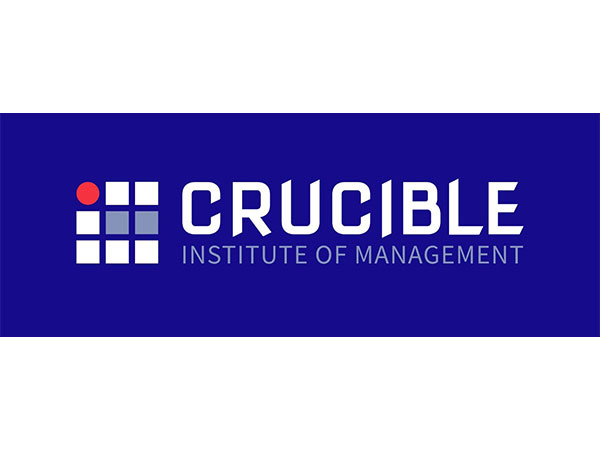DevSecOps: Integrating Security into Development

DevSecOps, short for Development, Security, and Operations, represents a cultural and technical shift in how organizations approach software development. By integrating security practices directly into the DevOps workflow, DevSecOps ensures that security is a continuous and integral part of the development process, rather than an afterthought.
Understanding DevSecOps starts with recognizing the importance of embedding security into every stage of software development. Traditional development models often treated security as a final step, resulting in vulnerabilities and delays. DevSecOps addresses these issues by fostering a collaborative culture where developers, security professionals, and operations teams work together seamlessly.
The Evolution of DevSecOps
The journey of DevSecOps began with the evolution of DevOps, a methodology that emphasized collaboration between development and operations to achieve faster and more reliable software delivery. As cyber threats became more sophisticated, it became clear that security needed to be integrated into this collaborative framework, leading to the birth of DevSecOps.
DevOps originated as a response to the challenges posed by siloed development and operations teams. By breaking down these silos, DevOps aimed to enhance communication, streamline workflows, and accelerate software release cycles. However, the increasing complexity of software systems and the growing number of security threats highlighted the need for a more security-focused approach.
DevSecOps extends the principles of DevOps by embedding security practices into every phase of the development lifecycle. This includes incorporating security requirements from the initial design stages, continuously monitoring for vulnerabilities, and automating security tests throughout the build, test, and deployment phases.
Core Components of DevSecOps
Security automation is a fundamental component of DevSecOps. Automating security tasks, such as code analysis, vulnerability scanning, and compliance checks, ensures that security measures are consistently applied and reduces the risk of human error. Automation also speeds up the development process by identifying and addressing security issues early.
Continuous monitoring is another critical aspect. By continuously monitoring the application and infrastructure for security threats, organizations can detect and respond to incidents in real-time. This proactive approach helps in maintaining a strong security posture and minimizes the impact of potential breaches.
A collaborative culture is essential for the successful implementation of DevSecOps. It requires fostering an environment where developers, security experts, and operations teams share responsibility for security. This collaboration is often facilitated through regular communication, joint planning sessions, and shared objectives.
Benefits of DevSecOps
One of the primary benefits of DevSecOps is enhanced security. By integrating security into the development process, organizations can identify and mitigate vulnerabilities early, reducing the risk of security breaches. This proactive approach helps in building more robust and secure software.
DevSecOps also leads to faster delivery of software. By automating security tasks and embedding them into the CI/CD pipeline, security checks become an integral part of the development workflow, rather than bottlenecks that slow down the process. This results in shorter development cycles and quicker time-to-market.
Compliance and governance are crucial aspects of modern software development. DevSecOps helps organizations meet regulatory requirements and maintain compliance by ensuring that security policies are consistently applied throughout the development lifecycle. Automated compliance checks and continuous monitoring make it easier to demonstrate adherence to industry standards.
Implementing DevSecOps in Your Organization
Assessing current practices is the first step towards implementing DevSecOps. Organizations need to evaluate their existing development, security, and operations workflows to identify gaps and areas for improvement. This assessment helps in understanding the current state of security practices and sets the foundation for a DevSecOps transformation.
Building a DevSecOps culture requires a commitment to collaboration and continuous improvement. Organizations should foster an environment where security is everyone’s responsibility and encourage open communication and knowledge sharing. This cultural shift often involves training and awareness programs to equip teams with the necessary skills and knowledge.
Choosing the right tools is essential for successful DevSecOps implementation. Organizations should select tools that integrate seamlessly into their existing workflows and provide capabilities for security automation, continuous monitoring, and compliance management. The right tools can significantly enhance the efficiency and effectiveness of DevSecOps practices.
DevSecOps Tools and Technologies
Security testing tools play a vital role in DevSecOps. These tools help in identifying vulnerabilities in code, dependencies, and infrastructure. Static Application Security Testing (SAST) and Dynamic Application Security Testing (DAST) tools are commonly used to analyze code for security flaws and test running applications for vulnerabilities.
CI/CD integration is crucial for embedding security into the development pipeline. Tools that integrate with Continuous Integration and Continuous Deployment (CI/CD) platforms enable automated security checks at every stage of the development process. This ensures that security is continuously enforced and that vulnerabilities are addressed promptly.
Cloud security solutions are increasingly important as more organizations adopt cloud-native architectures. These solutions provide capabilities for securing cloud infrastructure, managing access controls, and monitoring cloud environments for security threats. Integrating cloud security into DevSecOps practices helps in maintaining a robust security posture in the cloud environment, ensuring that applications remain secure even as they scale and evolve.
Challenges in DevSecOps Adoption
Despite the clear benefits, adopting DevSecOps is not without its challenges. One significant barrier is cultural resistance. Traditional organizational structures often separate development, security, and operations into distinct teams with different objectives. Overcoming these silos requires a cultural shift towards greater collaboration and shared responsibility for security.
Technical challenges also play a role. Integrating security tools into existing workflows and ensuring compatibility with various development and operations tools can be complex. Organizations need to carefully evaluate their technology stack and make strategic decisions to facilitate seamless integration.
Skill gaps are another hurdle. DevSecOps requires a combination of development, security, and operations expertise, which can be difficult to find in a single team. Investing in training and upskilling existing staff is essential to bridge these gaps and ensure that teams have the necessary skills to implement DevSecOps effectively.
Best Practices for Successful DevSecOps
Early integration of security into the development process is crucial. Security should be considered from the initial design stages, with requirements and potential threats identified and addressed early. This proactive approach helps in preventing security issues from becoming major problems later in the development cycle.
Continuous feedback loops are important for maintaining a strong security posture. Regularly reviewing security metrics, conducting post-mortems after incidents, and iterating on security practices help organizations continuously improve their security processes. Feedback from security incidents and testing should be used to refine and enhance security measures.
Regular training and awareness programs are essential to keep teams updated on the latest security threats and best practices. Security is a constantly evolving field, and staying informed about new vulnerabilities and attack vectors is crucial. Training sessions, workshops, and security drills can help in maintaining a high level of security awareness among all team members.
Case Studies of DevSecOps Implementation
Real-world examples of DevSecOps implementation can provide valuable insights and lessons. For instance, a leading financial services company adopted DevSecOps to enhance their application security and reduce the time required for security testing. By integrating security tools into their CI/CD pipeline, they were able to automate security checks and significantly reduce the number of vulnerabilities in their code.
Another example is a healthcare organization that implemented DevSecOps to comply with stringent regulatory requirements. They leveraged security automation and continuous monitoring to ensure compliance with healthcare regulations and protect sensitive patient data. This approach not only enhanced their security posture but also improved their ability to meet compliance requirements.
These success stories highlight the practical benefits of DevSecOps and demonstrate how organizations can effectively integrate security into their development processes.
Future Trends in DevSecOps
The future of DevSecOps is shaped by several emerging trends. Artificial Intelligence (AI) and Machine Learning (ML) are increasingly being used to enhance security automation and threat detection. AI and ML can analyze vast amounts of data to identify patterns and anomalies that may indicate security threats, enabling more proactive and effective security measures.
Increased automation is another key trend. As organizations strive to improve efficiency and reduce manual effort, automation of security tasks will continue to grow. Automated security testing, compliance checks, and incident response processes will become more sophisticated, enabling faster and more reliable security practices.
Evolving security threats will also drive the future of DevSecOps. As cyber threats become more advanced and sophisticated, organizations will need to continuously adapt their security strategies. Staying ahead of these threats will require ongoing investment in security research, tools, and practices.
DevSecOps represents a significant advancement in how organizations approach software development and security. By integrating security into every stage of the development process, DevSecOps ensures that security is a continuous and integral part of software delivery. This approach not only enhances security but also improves the speed and efficiency of development, making it a crucial strategy for modern organizations.
As organizations continue to adopt DevSecOps, they will benefit from enhanced security, faster delivery, and better compliance. By overcoming cultural and technical challenges, investing in training and awareness, and leveraging the right tools and technologies, organizations can successfully implement DevSecOps and build more secure and resilient software systems.
FAQs
1. What is DevSecOps?
- DevSecOps is an approach that integrates security practices into the DevOps process, ensuring that security is considered at every stage of software development and delivery.
2. Why is DevSecOps important?
- DevSecOps is important because it helps organizations identify and mitigate security vulnerabilities early in the development process, reducing the risk of security breaches and improving the overall security posture.
3. How does DevSecOps differ from DevOps?
- While DevOps focuses on collaboration between development and operations to achieve faster and more reliable software delivery, DevSecOps adds security into the mix, ensuring that security practices are integrated throughout the development lifecycle.
4. What are the core components of DevSecOps?
- The core components of DevSecOps include security automation, continuous monitoring, and a collaborative culture that promotes shared responsibility for security among development, security, and operations teams.
5. What are the benefits of implementing DevSecOps?
- The benefits of implementing DevSecOps include enhanced security, faster delivery of software, and improved compliance with regulatory requirements. By embedding security into the development process, organizations can build more secure and resilient software systems.








